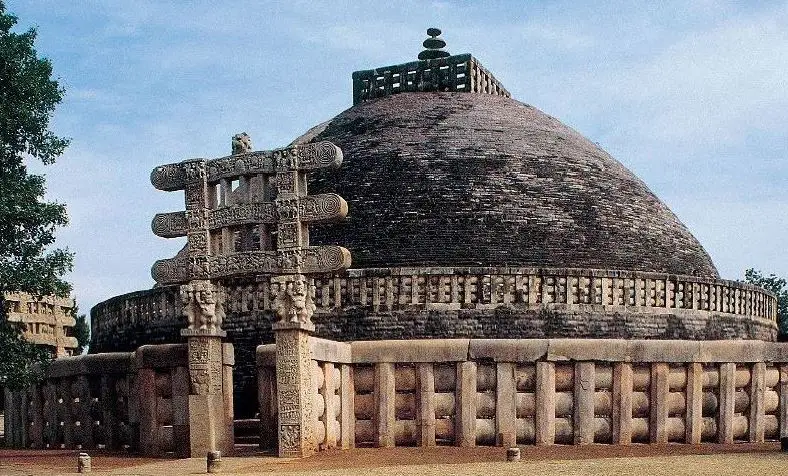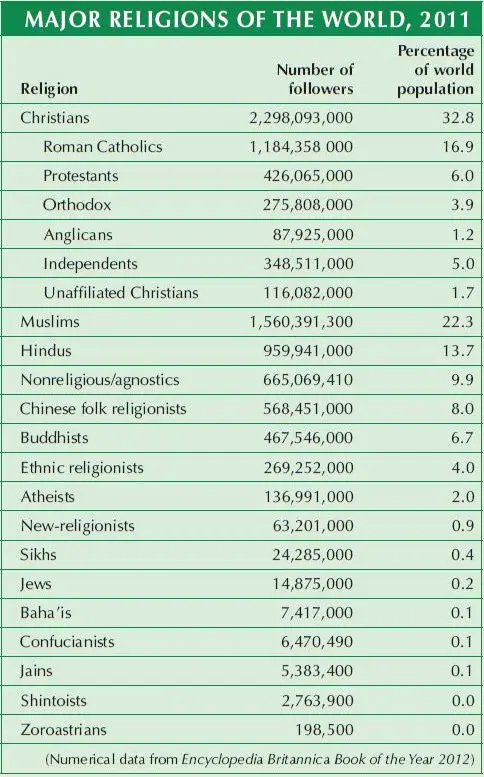Table of Contents
How did Buddhism emerge and spread? | UPSC – IAS
Buddhism was born in India, within the culture of Hinduism, and then charted its own path. Like Hinduism, it questioned the reality of the earthly world and speculated on the existence of other worlds. Unlike Hinduism, however, Buddhism had a founder, a set of originating scriptures, and an order of monks. In opposition to Hinduism, it renounced hereditary caste organization and the supremacy of the brahmin priests. Buddhism spread to Southeast Asia, gaining acceptance as the principal religion of Myanmar, Thailand, Cambodia, Laos, and Vietnam until today. It won multitudes of adherents throughout the rest of Asia as well, in Sri Lanka, Tibet, China, Korea, and Japan. Yet in India itself, Buddhism lost out in competition with Hinduism and its priesthood, virtually vanishing from the subcontinent by about the twelfth century c.e.
The Origins of Buddhism | UPSC – IAS
All we know of the Buddha’s life and teaching comes from much later accounts, embellished by his followers. While there is much doubt about almost every aspect of the Buddha’s life and teachings, the accounts that exist tell the following story.
The life of the Buddha. | UPSC – IAS
Siddhartha Gautama was born about 563 b.c.e. in the foothills of the Himalaya Mountains of what is now Nepal. His father, a warrior chief of the kshatriya caste, received a prophecy that Siddhartha would become either a great emperor or a great religious teacher. Hoping that his son would follow the former vocation, the chief sheltered him as best he could so that he would experience neither pain nor disillusionment.
When he was 29 years old, Siddhartha started to grow curious about what lay beyond the confines of his father’s palace. Leaving his wife, Yasadhara, and their son, Rahula, he instructed his charioteer to take him to the city, where he came across a frail, elderly man. Never having encountered old age, Siddhartha was confused. His companion explained that aging was an inevitable and painful part of human experience. As Siddhartha took further excursions outside the palace, he soon came to see that pain was an integral part of life, experienced in illness, aging, death, and birth. The search for a remedy for this pervasive sorrow became his quest.
On his fourth and final trip he met a wandering holy man who had shunned the trappings of wealth and material gain. Siddhartha decided to do likewise. Bidding farewell to his family for the last time, he set out on horseback in search of an antidote to sorrow and a means of teaching it to others.
For six years Siddhartha wandered as an ascetic. Nearing starvation, however, he gave up the path of asceticism. Determined to achieve enlightenment, he began to meditate, sitting under a tree at Bodh Gaya near modern Patna, in India. Mara, the spirit of this world, who tempted him to give up his meditation with threats of punishment and promises of rewards, tested his concentration and fortitude. Touching the ground with his hand in a gesture, or mudra, repeated often in sculptures of the Buddha, Siddhartha revealed these temptations to be illusions. On the forty-ninth day of meditation he reached enlightenment, becoming the Buddha, “He Who Has Awakened.” He had found an antidote to pain and suffering. He proceeded to the Deer Park at Sarnath, near Banaras, where he delivered his first sermon, beginning by setting forth the Four Noble Truths of suffering. The source of suffering, he taught, was personal desire and passion:
A new consciousness could be achieved by a combination of disciplining the mind and observing ethical precepts in human relationships. In the face of continuing rebirths into the pain of life, the Buddha taught that right living could bring release from the cycle of mortality and pain, and entry into nirvana, a kind of blissful nothingness. On the metaphysical plane, the Buddha taught that everything in the universe is transient; there is no “being.” There exists neither an immortal soul nor a god, neither atman nor Brahman. The Buddha’s teachings about the illusion of life and about rebirth and release were consistent with Hindu concepts of maya, samsara, and moksha, but the Buddha’s denial of god put him on the fringes of Hindu thought. His rejection of caste as an organizing hierarchy and of the Hindu priests as connoisseurs of religious truth won him powerful allies—and powerful opponents. Although much of the Hindu priesthood opposed the Buddha’s teachings, the kings of Magadha and Kosala, whose territories included most of the lower Gangetic plain, befriended and supported him and the small band of followers gathered around him. The Buddha taught peacefully and calmly until about 483 b.c.e., when, at the age of 80, he died, surrounded by a cadre of dedicated monks and believers, the original Buddhist Sangha (order of monks). The threefold motto of all devout Buddhists became “I seek refuge in the Buddha; I seek refuge in the Doctrine; I seek refuge in the Sangha.”
The Sangha | UPSC – IAS
The Sangha was open to all men regardless of caste, and thus drew the antagonism of brahmins, although some did join. For a time, women were permitted to form their own convents, but only under special restrictions. Today, Buddhist nuns exist only in Tibet.
The monks wore saffron robes and shaved their heads. They practiced celibacy and renounced alcohol, but did not have to take a vow of obedience to the order and were intellectually and spiritually free. Decisions were made through group discussion, perpetuating the pattern of the early republics of the north Indian hills. Monks studied, disciplined their spirits, meditated, and did the physical work of their monasteries. At first they wandered, begging for their living, except during the rainy months of the monsoon. But as monasteries became richer, through donations of money and land, the monks tended to settle down. They also tended to give up begging, which diminished their contact with the common people.
The emergence of mahayana Buddhism | UPSC – IAS
A series of general councils began to codify the principles, doctrines, and texts of the emerging community. The first council, convened shortly after the Buddha’s death, began the continuing process of collecting his teachings. The second, about a century later, began to dispute the essential meaning of Buddhism. The third, convened at Pataliputra, Asoka’s capital, revealed more of the differences that would soon lead to a split over the question of whether the Buddha was a human or a god. By this time an array of Buddhist caityas, or shrines, was growing. In addition to monasteries, great stupas, or monuments filled with Buddhist relics, were built at Barhut, Sanchi, and Amaravati (see map, below). Between 200 b.c.e. and 200 c.e. there were more Buddhist than Hindu shrines in India. Theological discussion flourished, with a heavy emphasis on metta, or benevolence; nonviolence; dharma, or proper behavior (although not related to caste, since Buddhism rejected hereditary caste); and tolerance for all religions.
The fourth general council, convened in the first century c.e. in Kashmir, codified the key doctrines of Buddhism as they had developed from earliest times. These were the principles of the Theravada (“Doctrine of the Elders”) branch of Buddhism, which we have been examining and which is today the prevailing form in Sri Lanka and Southeast Asia, except for Vietnam.
By now, however, a newer school of Mahayana Buddhism had been growing for perhaps two centuries and had become a serious challenge to Theravada. Mahayana means “the Greater Vehicle,” and its advocates claimed that their practices could carry more Buddhists to nirvana because they had bodhisattvas to help. A bodhisattva was a “being of wisdom” on the verge of achieving nirvana but so concerned about the welfare of fellow humans that he postponed his entrance into nirvana to remain on earth, or to be reborn, in order to help others. In addition, Mahayana Buddhism taught that religious merit, achieved through performing good deeds, could be transferred from one person to another. It embellished the concept of nirvana with the vision of a Mahayana heaven, presided over by Amitabha Buddha, a Buddha who had lived on earth and had now become a kind of father in heaven. Subsequently, Mahayanists developed the concept of numerous heavens with numerous forms of the Buddha presiding over them. They also developed the concept of the Maitreya Buddha, a suffering servant who will come to redeem humanity.
Some theologians note the similarity of the concept of this Maitreya Buddha to the Christian Messiah, and some suggest that the Buddhists may have borrowed it. They also suggest that Christians may have borrowed the narratives of the virgin birth of the Buddha and of his temptation in his search for enlightenment, and applied them to Jesus. There are significant similarities in the stories of these two men/gods and their biographies. Further, Mahayanists spoke of three aspects of the Buddha: Amitabha, the Buddha in heaven; Gautama, the historical Buddha on earth; and the most revered of all the bodhisattvas, the freely moving Avalokiteshvara. Theologians ask: To what degree do these three Buddhist forms correspond to the Father, Son, and Holy Spirit of Christianity as it was developing at the same time? How much borrowing took place between India and the Mediterranean coast, and in which direction?
Within India, Mahayana Buddhism began to challenge Hinduism more boldly than Theravada had. Wishing to compete for upper-caste and upper-class audiences, Mahayanists began to record their theology in Sanskrit, the language of the elite, rather than the more colloquial Pali language, which Theravada had preferred. Mahayana theologians, most notably Nagarjuna (fl. c. 50–150 c.e.), elaborated Buddhist philosophy and debated directly with brahmin priests. Buddhist monasteries established major educational programs, especially at Nalanda in Bihar, where the Buddha had spent much of his life, and at Taxila, on the international trade routes in the northern Punjab.
Key Terms Explained | UPSC – IAS
- Mudra – A hand gesture with specific meaning or significance in Indian classical sculpture and dance. One specific mudra, for example, indicates teaching, another fearlessness, another revelation, etc.
- Nirvana – In Theravada Buddhism, the blissful nothingness into which a soul that had lived properly entered after death, and from which there would be no further rebirth. (Compare nirvana among Jains, below.) In Mahayana Buddhism, nirvana became an abode of more active bliss, a kind of heaven, filled with heavenly activities.
- Bodhisattva – A “being of wisdom” worthy of entering nirvana, but who chooses to stay on earth, or be reborn, in order to help others. In Mahayana Buddhism, the Buddha himself is considered also to be one of the bodhisattvas.
Sacred writings of Buddhism | UPSC – IAS
- Tripitaka –“The Three Baskets”: Vinaya, on the proper conduct of Buddhist monks and nuns; Sutta, discourses attributed to the Buddha; and Abhidhamma, supplementary doctrines. Written in Pali.
- The Mahayanas – (Mahayana is Sanskrit for “Greater Vehicle.”) The body of writings associated with the school of Buddhism dominant in Tibet, Mongolia, China, Korea, and Japan. Includes the famous allegory the Lotus Sutra, the Buddhist “Parable of the Prodigal Son.”
- Milindapanha – Dialogue between the Greek king Milinda and the Buddhist monk Nagasena on the philosophy of Buddhism.
- Buddha’s four noble Truths – Suffering is always present in life; desire is the cause of suffering; freedom from suffering can be achieved by overcoming desires; the Eightfold Path provides the means to accomplish this.





